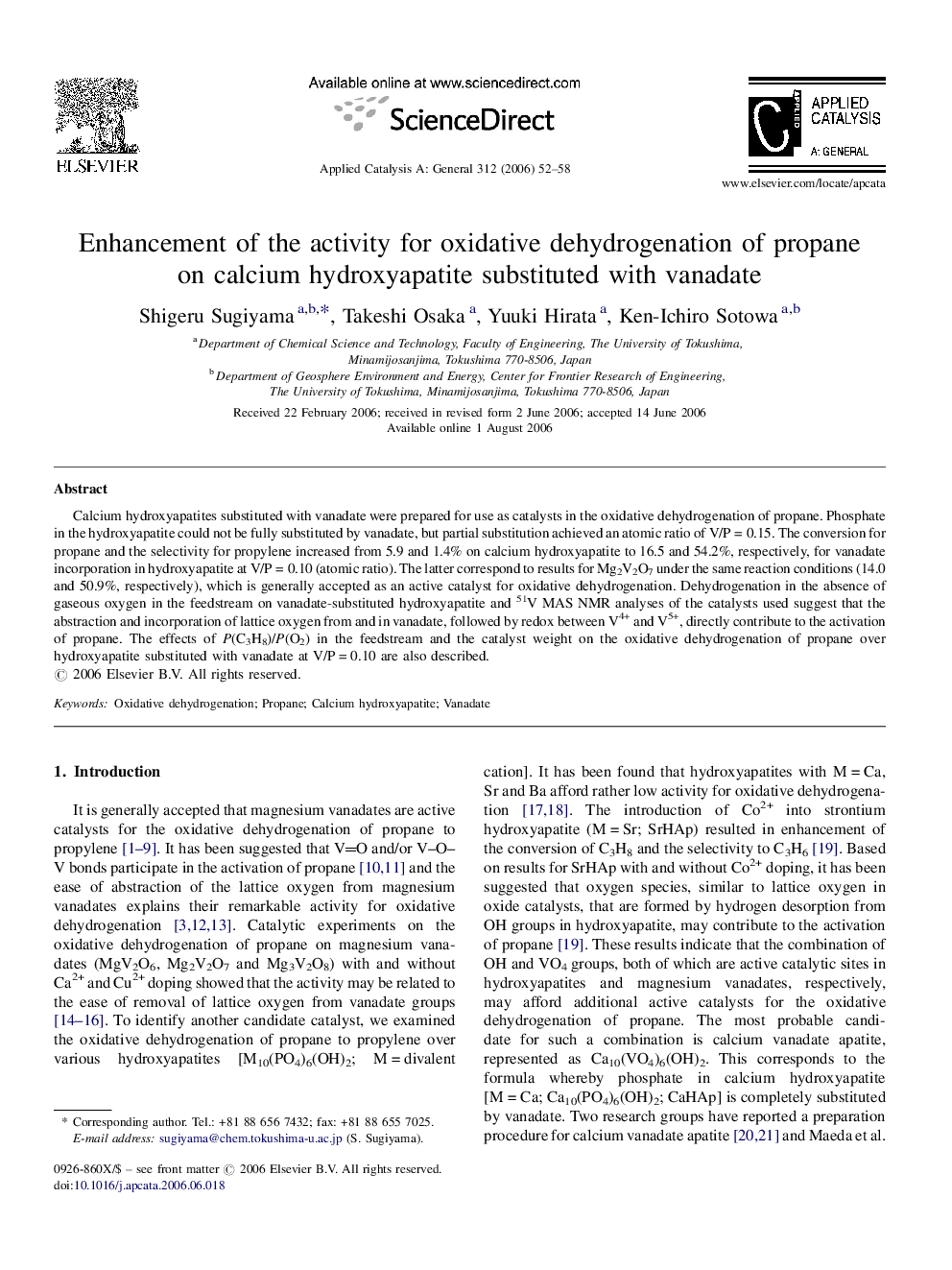| Article ID | Journal | Published Year | Pages | File Type |
|---|---|---|---|---|
| 44594 | Applied Catalysis A: General | 2006 | 7 Pages |
Calcium hydroxyapatites substituted with vanadate were prepared for use as catalysts in the oxidative dehydrogenation of propane. Phosphate in the hydroxyapatite could not be fully substituted by vanadate, but partial substitution achieved an atomic ratio of V/P = 0.15. The conversion for propane and the selectivity for propylene increased from 5.9 and 1.4% on calcium hydroxyapatite to 16.5 and 54.2%, respectively, for vanadate incorporation in hydroxyapatite at V/P = 0.10 (atomic ratio). The latter correspond to results for Mg2V2O7 under the same reaction conditions (14.0 and 50.9%, respectively), which is generally accepted as an active catalyst for oxidative dehydrogenation. Dehydrogenation in the absence of gaseous oxygen in the feedstream on vanadate-substituted hydroxyapatite and 51V MAS NMR analyses of the catalysts used suggest that the abstraction and incorporation of lattice oxygen from and in vanadate, followed by redox between V4+ and V5+, directly contribute to the activation of propane. The effects of P(C3H8)/P(O2) in the feedstream and the catalyst weight on the oxidative dehydrogenation of propane over hydroxyapatite substituted with vanadate at V/P = 0.10 are also described.
